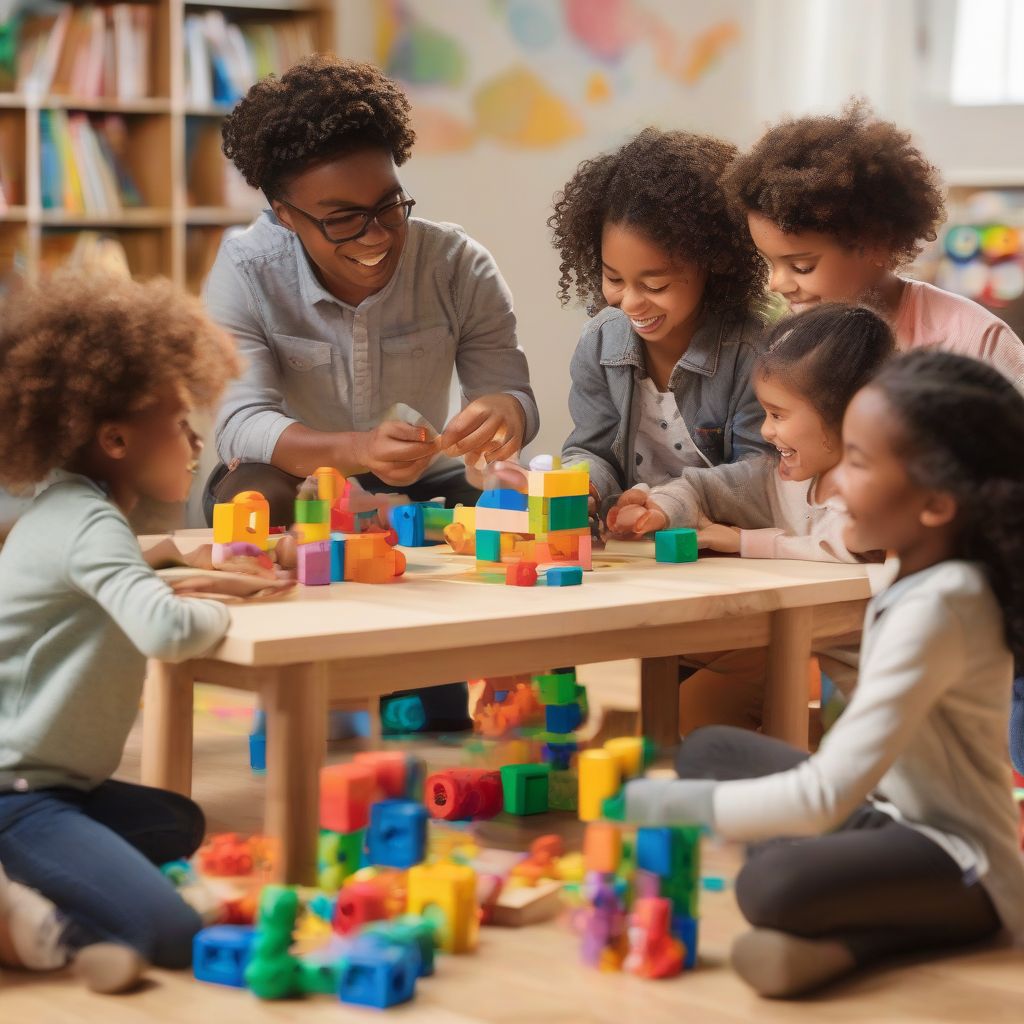Remember the joy of building a tower with blocks as a child, or the satisfaction of piecing together a puzzle? That’s the power of hands-on learning in action. It’s not just for kids; it’s a potent tool for learners of all ages. As an expert in nutrition and meal prepping, I’ve seen firsthand how hands-on approaches transform healthy eating from a chore into a fun and engaging experience.
What are Hands-On Educational Materials?
Hands-on educational materials encompass any resource that encourages active participation and learning by doing. Think beyond the traditional classroom—these materials can be as simple as building blocks, cooking utensils, or as complex as robotics kits and scientific models. They bridge the gap between theory and practice, fostering deeper comprehension and lasting knowledge retention.
Why are Hands-On Educational Materials So Effective?
1. Engaging Multiple Senses for Deeper Learning
Remember trying to learn a new language just by reading a textbook? It’s tough! Hands-on learning taps into multiple senses, making the learning journey more engaging and effective. Imagine learning about fractions by cutting a cake into equal slices or understanding plant life cycles by nurturing a seedling into a blossoming flower. This multisensory approach caters to diverse learning styles, making information stickier and more meaningful.
2. Igniting Curiosity and a Love for Learning
Hands-on activities are inherently exciting! They transform passive recipients of information into active explorers, sparking curiosity and fostering a genuine love for learning. When students can manipulate objects, experiment with concepts, and see the tangible results of their efforts, their motivation skyrockets. Learning becomes an adventure, not a chore.
3. Developing Critical 21st-Century Skills
The world needs problem-solvers, collaborators, and creative thinkers. Hands-on learning nurtures these essential 21st-century skills. When students work together to build a model bridge or design a science experiment, they develop critical thinking, communication, collaboration, and adaptability—skills highly valued in today’s rapidly evolving world.
 Children Engaging in Hands-On Learning Activity
Children Engaging in Hands-On Learning Activity
4. Bridging the Gap Between Theory and Practice
We’ve all been there—stuck with a head full of facts but unsure how to apply them. Hands-on learning bridges this gap by providing practical application for theoretical knowledge. Consider learning about healthy eating. Reading about the benefits of fruits and vegetables is one thing, but preparing a colorful salad or creating a fruit kebab brings those concepts to life, making healthy choices more appealing and attainable.
5. Boosting Confidence and a Sense of Accomplishment
There’s a unique satisfaction that comes from creating something tangible, from witnessing the direct results of your efforts. Hands-on learning fuels this sense of accomplishment, boosting confidence and self-esteem. Whether it’s successfully building a circuit, coding a simple game, or cooking a delicious meal, these victories—big or small—ignite a sense of pride and motivate students to embrace challenges head-on.
Hands-On Learning in Action: Real-World Examples
The beauty of hands-on learning lies in its versatility. It transcends age groups and subject matters, finding its place in homes, classrooms, and beyond.
- Early Childhood Education: Building blocks, puzzles, and art supplies encourage creativity, problem-solving, and fine motor skills development.
- STEM Subjects: Robotics kits, science experiments, and coding challenges bring abstract concepts to life, nurturing critical thinking and problem-solving abilities.
- Arts and Humanities: Creating dioramas, performing plays, and crafting historical artifacts make learning engaging and memorable.
- Life Skills: Cooking classes, gardening projects, and financial literacy simulations equip individuals with essential skills for independent living.
Incorporating Hands-On Learning at Home and in the Classroom
Integrating hands-on learning doesn’t require fancy equipment or elaborate setups. It’s about fostering an environment of exploration and discovery.
- Encourage Exploration: Provide open-ended materials like building blocks, art supplies, and recycled materials, allowing children to explore their creativity and build their own creations.
- Embrace Mistakes: Create a safe space for experimentation, where mistakes are viewed as valuable learning opportunities rather than failures.
- Connect Learning to Real Life: Relate lessons to everyday experiences. For instance, involve children in meal planning and preparation to teach them about nutrition and fractions.
- Make it Social: Encourage collaborative learning through group projects, science fairs, and peer teaching.
Conclusion: Embracing the Power of Hands-On Learning
In a world often dominated by screens and passive learning, hands-on educational materials offer a refreshing and effective alternative. By engaging multiple senses, fostering curiosity, and bridging the gap between theory and practice, these materials empower learners of all ages to become active participants in their educational journey. As you navigate your path toward knowledge and growth, remember the power of hands-on learning—it’s not just about absorbing information; it’s about experiencing it.
What are your favorite hands-on learning activities? Share your thoughts and experiences in the comments below! Let’s inspire each other to create engaging and effective learning environments. For more insightful articles on fostering a love for learning, explore these related resources:
- The Impact of Digital Learning Materials on Children’s Education
- How to Incorporate STEM Activities into Children’s Learning
[amazon bestseller=”educational toys for kids ages 6-8″]
